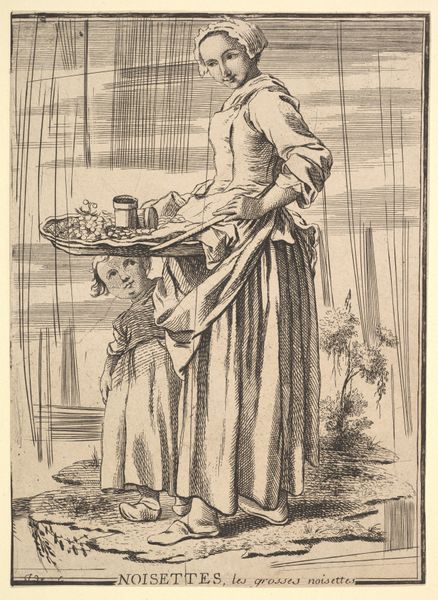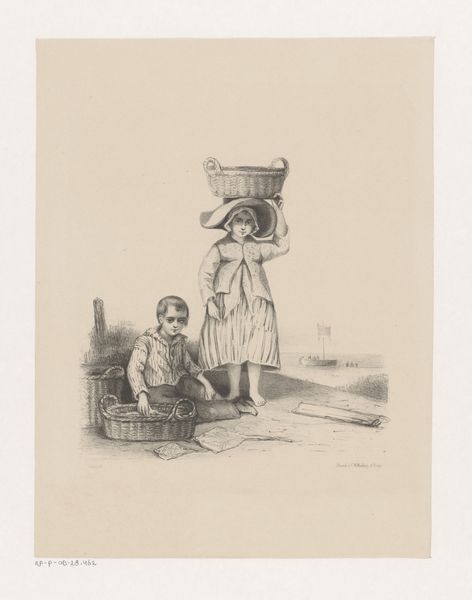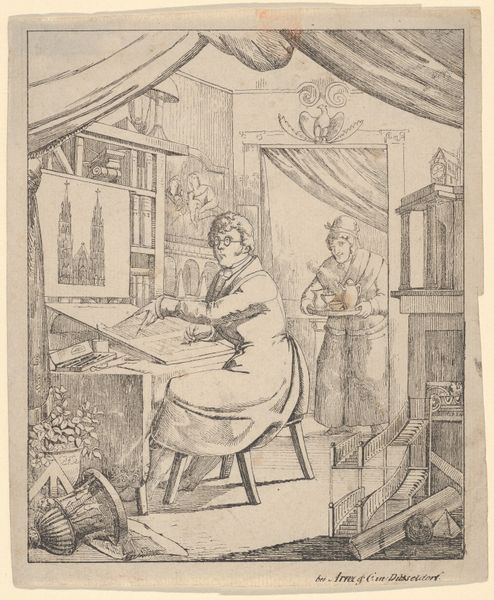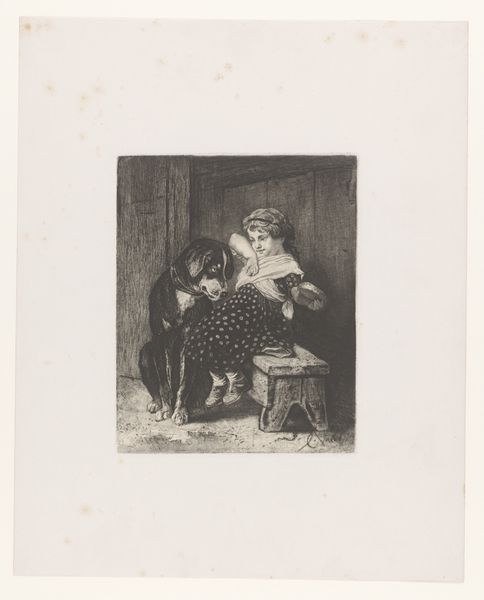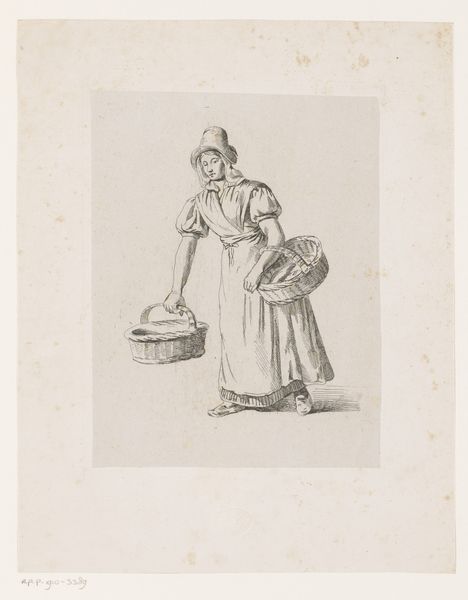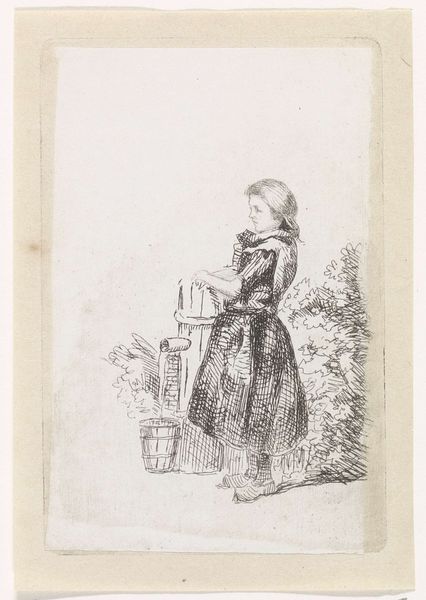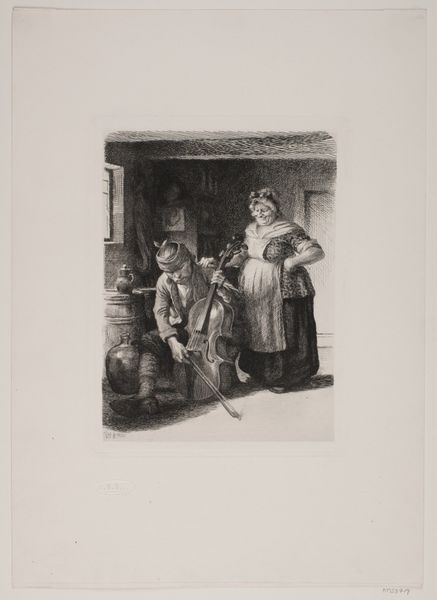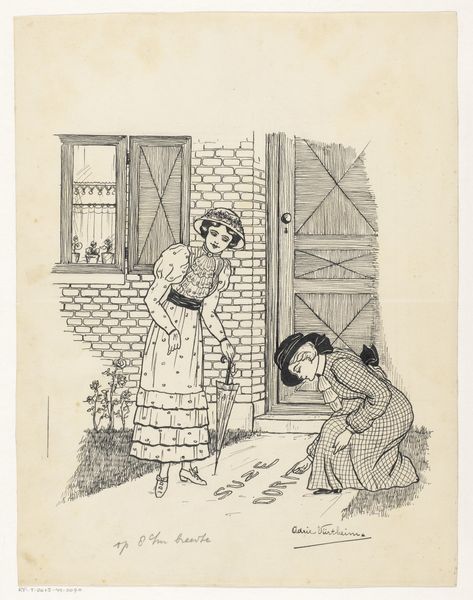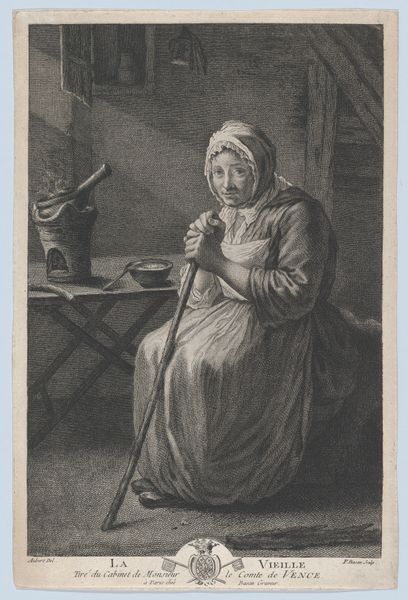
print, etching
#
portrait
# print
#
etching
#
genre-painting
#
realism
Dimensions: height 180 mm, width 124 mm
Copyright: Rijks Museum: Open Domain
Editor: Here we have Willem Geets' "Old Woman with Tray," etched in 1872. The detail is remarkable for a print. It depicts an elderly woman holding a tray with a coffee pot and cup, standing in what appears to be a simple room, with a dog sitting patiently beside her. What strikes me is how worn everything looks, yet also how lovingly rendered it is. What do you see in this piece? Curator: This etching speaks volumes about the material conditions of everyday life in the 19th century. It goes beyond a simple depiction; it’s an index of labor and consumption. The labor needed to create such an artwork, where the meticulous skill for the etching process itself reflects broader economic realities around art production and craft traditions. Editor: How so? The detail does seem incredibly precise. Curator: Etching, unlike painting, lends itself to reproduction. In that era, prints made art more accessible. Think about who this was made for; it connects to discussions around mass production and distribution. That worn coffee pot, the dog’s coarse fur; these are all specific material signs. How does their appearance translate their context and who could possibly use or own these? It asks us about the role of art in representing everyday life. Editor: So, instead of focusing on idealized beauty, it points to the economic realities? Curator: Precisely! It elevates the mundane. The rough texture of the woman's clothing, the floor tiles, even the sign on the wall, were all created with tools, metal plates, and acid. They reveal class, labor and its tools! How those materials became art opens dialogue with commerce, aspiration and access. Editor: That’s a completely different perspective than I usually take. Now I notice how those ordinary objects feel carefully chosen for the print. Curator: Absolutely. Considering these kinds of practical artistic endeavors help us challenge how traditional art history might view hierarchy in artistic disciplines by asking more fundamental questions about materiality. Editor: I hadn’t considered how the printmaking process and even this very specific choice to present everyday life provides an insight into artistic labour itself!
Comments
No comments
Be the first to comment and join the conversation on the ultimate creative platform.

